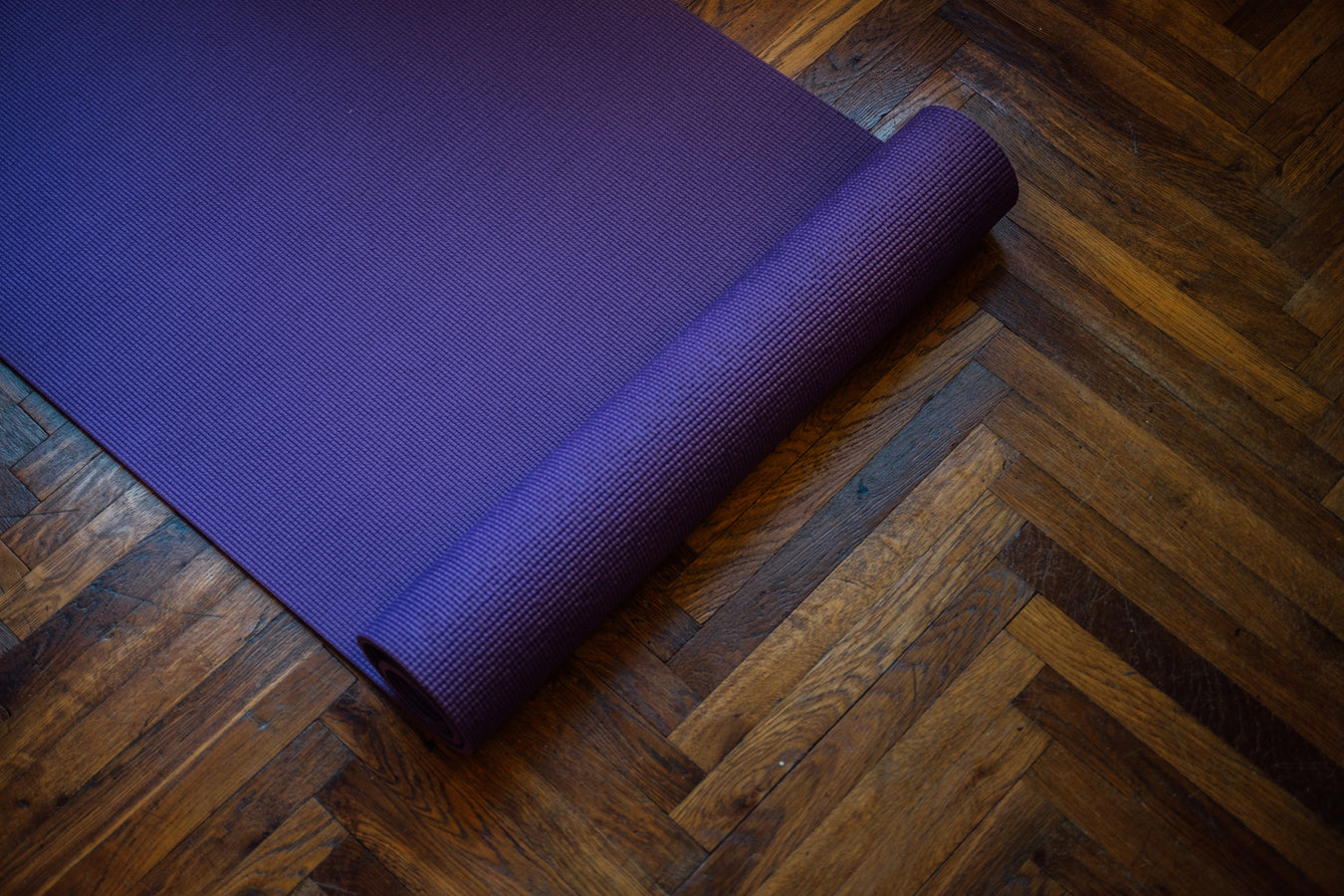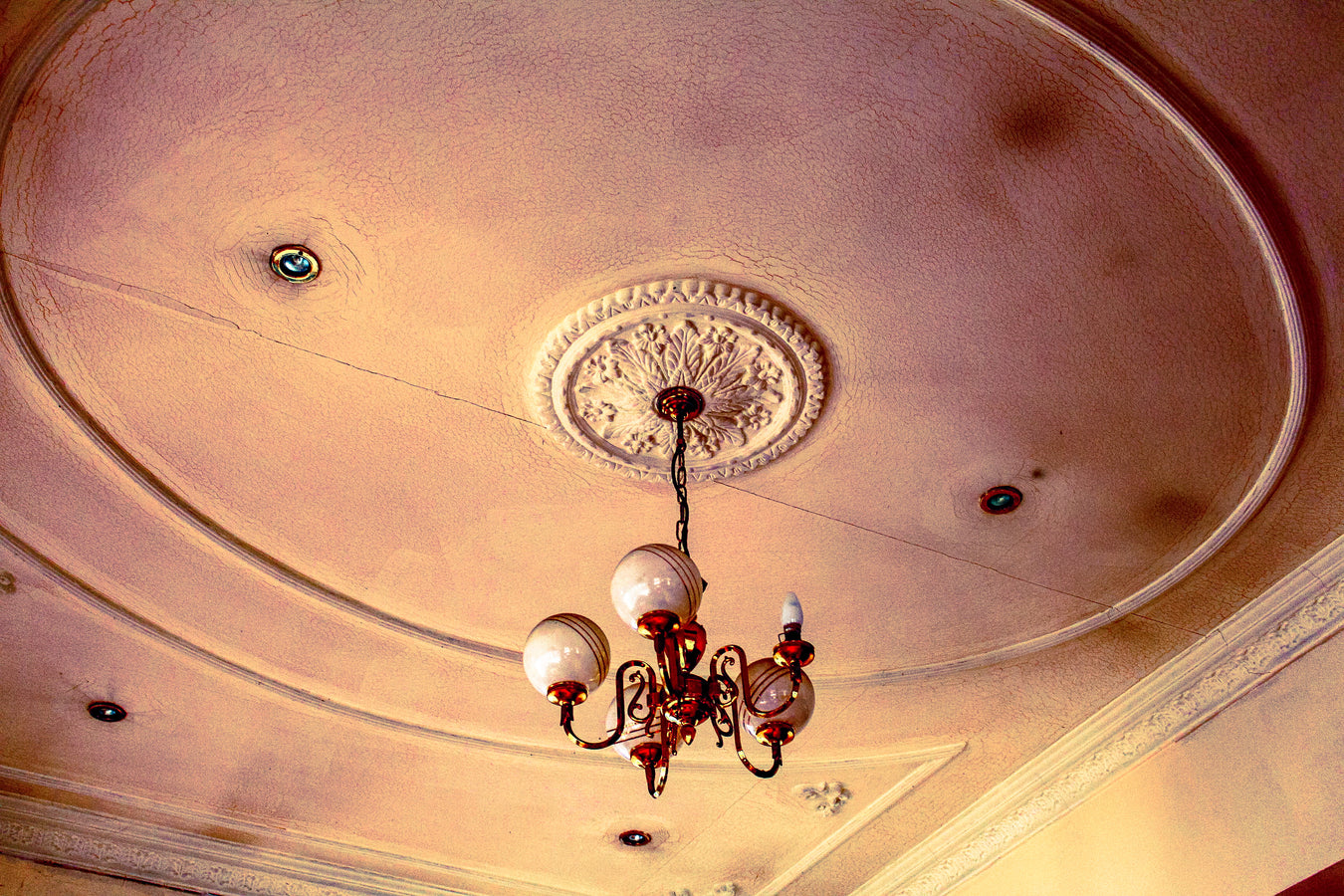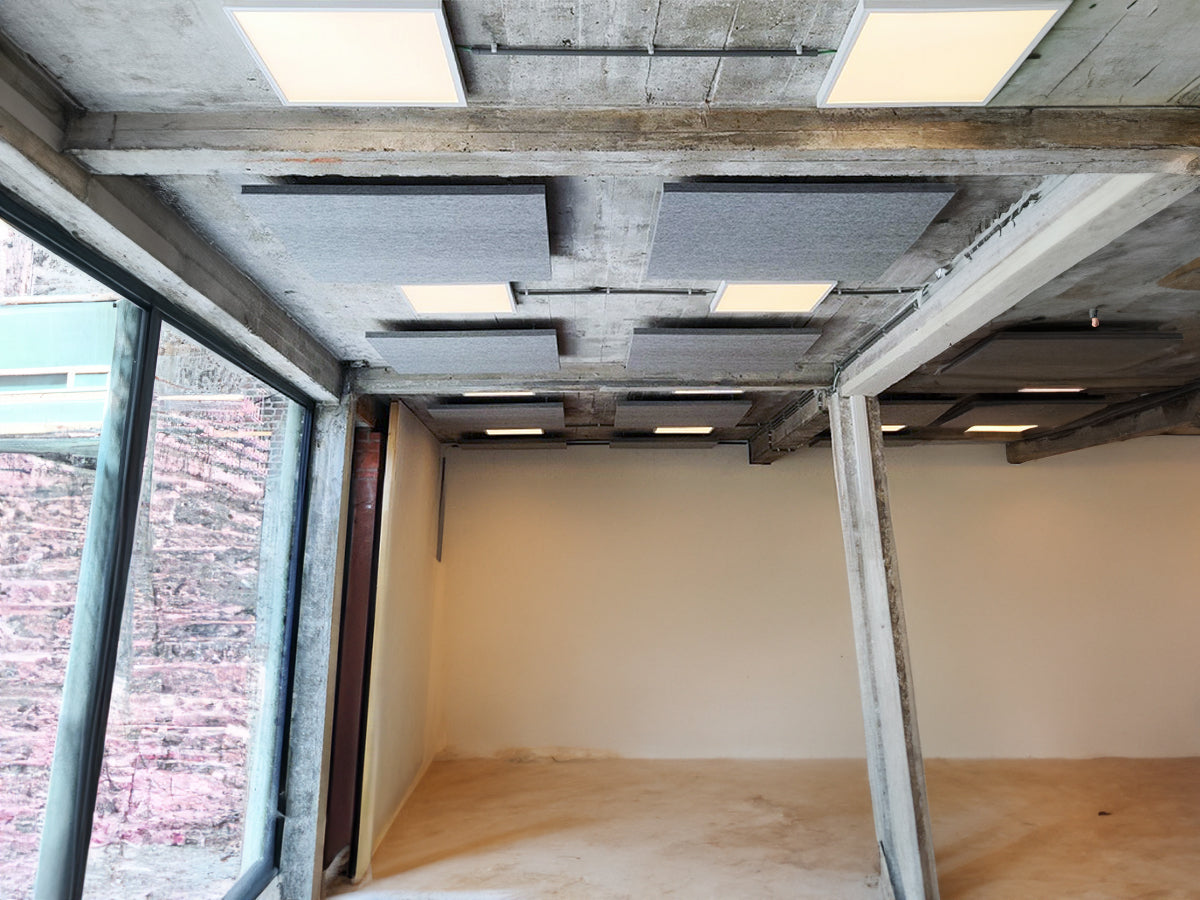1) Create the Stud Structure
This can be made from metal or from timber. For smaller walls up to 2.4m you can use 50mm stud work. Higher walls generally would use 70-75mm thick studs.
When it comes to sound proofing a wall it is much simpler than many websites would lead you to believe. This page will explore the science and try and explain why we have targeted the solutions we have. Many of the sound proof products you see on the internet can be created and installed yourself.
Is it a party wall (a wall shared between two properties) or is it an internal wall?
If it is a party wall it is helpful to know what it is made out of. This can affect your choice of materials to resolve your noise problems. This isn’t as hard as it sounds. Normally buildings built before the war are made of brick. After 1950 they become a bit harder to assess. The thing you want to be on your guard against is breeze block. Read our article on flanking transmission to find out why. If the wall has plasterboard stuck to it with dot and dab this might need removing. In general plastered brick walls are the easiest to soundproof.
The other question you will need to ask yourself is how much space you can afford to lose with your soundproofing job. A good rule of thumb is that the more space you can lose the better the acoustic performance, especially when it comes to the bass frequencies (such as deep men’s voices). Don’t panic, you can still get a good result with slim line solutions.
Another rule of thumb is that slimmer line solutions tend to use specialist materials which cost a bit more.
For Solid Party walls choose a slim line 50mm solution, or for a more heavy duty but thicker (up to 150mm) solution.
So which should you go for? In brief, most people wanting to soundproof are living in an urban environment. Losing lots of space is just not practical. We find most people opt for a simple slim line solution. The thicker wall will produce a better soundproofing result but it does come with a loss of space.
For Stud Walls, there are two ways to go. Either remove one face of the wall and follow our stud wall sound proofing guide. Or just add acoustic panels to the wall.
Should you choose not to go for a stick on solution then here is a quick overview on how to build a sound proofed stud wall.
Next we take a look at some key wall soundproofing topics, questions and topics to help you understand how to make the most of your wall soundproofing.
Yes! If you have a reasonable set of DIY skills, soundproofing is within most peoples reach. We offer advice on fitters however, in reality, any competent builder or tradesman can install soundproofing.
Each of our solutions has a calculator to work out your material requirements and we will provide a set of instructions for internal, stud or solid wall upgrades.
Perhaps the most confusing thing about soundproofing is the scale that is used to measure sound. A quick rule of thumb is that for every 10 decibel (dB) improvement, you will hear 50% less sound. So 20 dB will be a 75% improvement. Many companies will boast 50 dB+ numbers for their products. This is physically impossible. They will be talking about the performance of their product plus the wall it is attached to.
Any product that improves your situation by 15dB is good.
The dB scale is not linear so a sound that is 10dB louder than another is twice as loud to your ear. A sound that is 20dB louder is four times louder.
There are many reasons why some walls are so acoustically poor. The most common reason and thankfully the easiest to resolve is the case of Victorian brick walls. These are often very poorly constructed, leaving gaps and cracks between the bricks. These were built in a day when noise from neighbours was much less of a problem. You may only have a little plaster work protecting you from your neighbours noise.
With more modern constructions, particularly the 1960's, the materials used were too light to have any soundproofing value.
Properties built from the 1970's until the turn of the century often used very light weight materials with no acoustic protection in mind.
Very modern constructions should conform to regulation E and should have a reasonable level of soundproofing.
Sounds are transferred to us in the form of sound waves. The waves cause vibrations on our ear drums which the brain translates into the sounds we hear. The waves can travel through all materials with varying degrees of success. The length of the wave dictates the pitch of the sound. Low pitch sounds (like a bass drum) have very long wavelengths , up to 5m. High pitched sounds have much shorter wave lengths. A typical sound will be made up of a multitude of frequencies that range from low frequency to high. It can be thought of as similar to an orchestra, made up of many different elements. Each of these frequencies is producing it's own set of sound waves that is passing through your wall (ceiling or floor). The existing wall you have is, believe it or not, acting as a soundproofing surface but for various reasons it might not be doing a great job. So, when we try to sound proof we try and add acoustic materials which will combat as best we can the whole spectrum of frequencies that is coming through the wall.
We need to distinguish between the loudness of the noise and the frequency (pitch). In general, as sounds of the same volume pass though a wall, the low bass frequencies will penetrate the wall better than the high frequencies. Low frequency sounds lose less energy as they move through a wall. This is for two reasons, their longer wavelength and the fact that low frequency sounds create resonance (vibration) within the structure of the wall. This helps propagate the passage of sound. The problem with a standard brick wall is that it vibrates at a certain frequency which allows other specific frequencies to travel through the structure more easily (normally bass or low frequency). Our acoustic wall materials aim to tackle this resonance problem head on.
Each of the frequencies have a different wave length. The deeper the sound you are hearing the longer the wave length. The noise from neighbours that people hear are invariably lower frequencies. When tackling low frequency sound you can tackle in two ways. Firstly, increase the thickness of the wall. However very low frequency sound can have a wavelength of 5m or more so while making the walls physically thicker will improve things slightly, it isn't a realistic solution for most people.
The second method that a successful wall soundproofing solution will focus on is the introduction of many different materials that will act to break up the resonance in walls and effectively absorb the sound as it passes through the wall.
The waves carry with them a certain amount of energy, The key to successful soundproofing is to lose all, or most, of that energy while the wave passes through the wall. We do this by providing different materials that the wave passes its energy to in the way of vibrations. The wave expends the majority of its energy passing through the wall, leaving very little left by the time it reaches your ear.
When it comes to dealing with sound pollution, not all solutions are created equal. Whether you're trying to block out noisy neighbours or keep your own sound from traveling, understanding how soundproofing works can make all the difference. At its core, soundproofing is about finding the right balance between thickness, smarter material use, and absorption. But with space often at a premium, especially in urban areas, you have to make strategic choices that maximise sound reduction without sacrificing too much living space. Let’s dive into the most effective ways to combat sound pollution and how the science behind it can offer practical solutions for your specific needs.
Our highest performing solutions will tend to make the wall thicker. Often increasing the soundproofing barrier by 50 to 100%. These independent soundproof stud walls are not always the most practical solution from a space loss perspective, especially in smaller urban accommodation where every inch of living space is highly valued.
Where space is at a premium, we have to look for smarter materials and methods to gain similar sound absorption properties. The materials we want to use have to try and fulfil a few key rolls in a very limited space. The solution needs to create absorption within the make up of the wall and it does this by utilising several products that add mass and resilience.
The most well known law of soundproofing is the mass law. This states that by doubling the weight of the acoustic barrier you will gain roughly a 6db improvement in sound reduction. In other words if you doubled the depth of your brick wall separation, you would get around a 30-40% improvement in soundproofing.
Resilience is the ability of a material to absorb energy. The materials are designed to be inherently flexible in their construction so that when the sound waves hit, it vibrates and therefore absorbs the passing energy of the sound. The traditional method of creating resilience was resilient bars. Corrugated steel bars onto which heavy plasterboard is mounted. However it was quite quickly found that rubber mounted bars do a far superior job as rubber dissipates vibration much better than steel. This led to the invention of GenieClips. Acoustic membranes also act in this way, but for different frequencies.
Absorption of energy is the aim of any solution. It is a direct result of the mass and resilience of the materials that it is constructed from. We want to combine resilient layers with materials that have their own internal resilience, so, adding products which are intrinsically heavy, resilient and flexible makes sense. The SBx board is a fine silica filled board that vibrates easily throughout its structure. Add to this, further rubber layers such as SM20 mat or Tecsound which are non uniform throughout their structure and therefore are very effective at absorbing the sound energy.
Before soundproofing, the sound waves hit the wall, the high frequency waves are more easily absorbed, the low frequency sound pass though the wall easily and actually cause the wall to resonate helping ease the passage of sound.
The same sounds hit the soundproofed wall. The wall is a bit thicker which helps to block the waves. The sound wave is also encountering multiple different types of mass, construction and potentially air gaps. The sounds energy is absorbed in the wall and also the wall cannot resonate as one any more. The resonant frequency of the applied materials are very different to the original heavy brick.
This science of soundproofing is now somewhat of an art, we bring together multiple products that work in different ways to maximise the possibility of successfully soundproofing your wall. All we attempt to do at SoundStop is to ask you to think how much space you can afford to lose and how much budget you wish to put to work. We then offer the best solutions for your particular circumstance.

Are you trying to stop noise from below reaching you, or eradicate your noise passing down to your neighbours?

Ceiling soundproofing is often your only option when living below noisy neighbours. Check out our 4 solutions.

Jump straight into our sound absorption solutions designed and used in both public spaces and private homes.